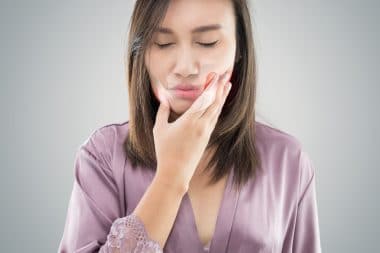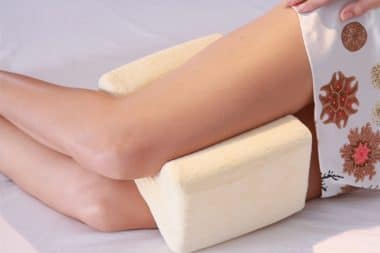Perhaps you sang or danced to the lively “Dry Bones (Dem Bones)” as a child and learned how the bones in your skeleton were connected. This little tune is a fun way to help you understand your skeletal structure. Unfortunately, it does not have any verses that describe how your bones are held together by connective tissue tendons and ligaments.
You may ask, what does this information have to do with an article about enthesopathy? The short answer is: Everything. The long answer is: Your tendons and ligaments are fibrous connective tissues that are attached to your bones. Their fibers go through a calcification or bone hardening process, which continues to some degree throughout your life.
Tendons attach “muscle to bone” (or other structures) and can therefore move the bone or structure to which they are attached. In comparison, ligaments attach “bone to bone.” They hold your bones together and keep them stable.
The insertion of tendons and ligaments to sites into your bones is called “enthesis.” When any disease or injury (of any cause or type) affects “enthesis”, the insertion sites become inflammed. Inflammation of the insertion sites is called “enthesitis.” If, however, there is a disease process involved at the insertion sites and not the joints, the disorder is called “enthesopathy.” The disorder could be either metabolic, inflammatory, traumatic, or degenerative (Mosby’s dictionary of Medicine, Nursing & Health professions).
We have defined entheses and enthesitis and their association with enthesopathy. Next, we will briefly examine what enthesopathy is, what causes it, common signs and symptoms, when to call your doctor and some selected treatments for this disorder. We will end with a four key takeaways.
What is enthesopathy?
According to some experts, “enthesopathy is a variety of syndromes in the course of many rheumatic, metabolic, and endocrine disorders.” This not only includes your body systems, but those things that are associated with various musculoskeletal injuries (in athletes and others) or it could be drug-induced. It includes both inflammatory and degenerative disorders and affects multiple tendon and ligament sites. Furthermore, it sometimes occurs in a recurrent pattern or may even become generalized. Of great importance, they note that enthesopathy may be the only or first manifestation of a systemic (body system) disorder (Slobodin, Rozenbaum, Boulman and Rosner, 2007; Resnick, D. and Niwayama, G., 1983)
What causes it?
According to Drs. Slobodin, Rozenbaum, Boulman and Rosner (2007), a variety of metabolic and endocrine conditions, as well as musculokeletal injuries, may manifest with enthesopathy features. This is why the causes for enthesis involvement, which leads to enthesopathy, “are not uniform and differ in the diverse disorders and conditions.”
There may be many reasons for enthesopathy, according to other sources such as the Chiropractic Spine & Hand Therapy Center and B. Carrelli. Some of them include:
– Workplace repetitive stress movements
– Infection
– Celiac disease: a gluten-sensitive enthesopathy (Atteno, et al)
– Some medications
– Crohn’s disease
– Reiter’s syndrome
– Psoriatic arthritis
– Plantar fasciitis
– Tennis elbow
– Rotator cuff syndrome
– Shin splints
– High hamstring pull
– Achilles tendinitis
– Frozen shoulder
– Runner’s knee
– DeQuervain’s tenosynovitis (“Brandy Carrelli | Chiropractor Resources, Chiropractic Techniques, Chiropractic Advice,” n.d.)
What are some common signs and symptoms?
As previously stated, enthesopathy manifests through many system disorders and musculoskeletal system conditions. As a result, the signs and symptoms will vary according to their causes. There are, however, common symptoms for both enthesitis and enthesopathy, which include musculoskeletal pain (enthesalgia), soreness, stiffness and discomfort.
Most of the symptoms interfere with an individual’s independence and mobility, especially when they become chronic. For example, workplace repetitive injuries may cause decreased productivity, loss of work days or depletion of accumulated sick days. Additionally, competitive athletes with enthesopathies may have to “sit out” for extended periods of time and could subsequently lose their place on the team. These issues could cause huge financial losses.
One can see from these limited examples that the proper diagnosis and treatment of enthesopathies are extremely important. Next, we will discuss why and when the doctor should be consulted. Following that, we will discuss some of the treatments individuals with enthesopathies use.
When should I call the doctor?
As with many conditions, initially, adults have a propensity for self-treatment and may not always seek medical advice. It is worth mentioning that enthesopathy can have diverse causes and consequences; therefore, it is best that medical advice be sought whenever you experience symptoms that are not relieved by normal measures. As Drs. Slobodin, Rozenbaum, Boulman and Rosner (2007) noted, sometimes, enthesopathy may be the only or first manifestation of a systemic (body system) disorder.
What are some common treatments?
Medical interventions are based on the affected individual’s symptoms and signs, the results of a physical assessment and a series of medical tests and reports. This is why treatments vary according to whether the disorder is due to injuries and overuse or to systemic conditions such as spondyloarthropathies, rheumatoid arthritis, chondrocalcinosis (Chc), osteoarthritis, Diffuse Idiopathic Skeletal Hyperostosis, the synovitis, acne, pustulosis, hyperostosis, osteitis syndrome (SAPHO), metabolic or endocrine diseases, or drug-induced tendinopathy (Slobodin, Rozenbaum, Boulman and Rosner, 2007).
Based on the specific enthesopathic disorder, according to some sources, treatments could include, but are not limited to, medical, non-medical and natural therapies such as:
– Analgesics
– Nonsteroidal anti-inflammatory drugs
– Corticosteroid medications
– Anti-TNF drugs, which interfere with the body’s production of TNF-alpha. Tumor necrosis factor-alpha or TNF-alpha is a cytokine critical for effective immune surveillance and is required for proper proliferation and function of natural killer cells, T cells, B cells, macrophages, and dendritic cells (Anti TNF Drugs).
– Radiotherapy
– Rheumatoid Arthritis Combination Drug Therapy of sulfasalazine and methotrexate
– Alternate medicine treatments for pain and inflammation
– Nutritional therapies
– Home remedies
– Physical therapy
– Occupational therapy
– Chiropractic therapies
– Music, color and other non-traditional methods to relieve pain
– Ultrasound
– Electrical stimulation
– Ice or heat applications for injuries
– Observing safe exercise practices
– Stretching, splinting and heel lifts for enthesopathy in the Achilles tendons.
– Maintaining a healthy weight and monitoring alcohol intake: Both of these behaviors are conducive to improved health. Especially in conditions where any extra amount of weight could extenuate the symptoms. Also, although a small study suggested that alcohol could help arthritis sufferers, it was debunked by an arthritis expert. He suggested that alcohol be taken in moderation, based on findings from a larger study (WebMD). Since some of the enthesopathies are associated with types of arthritis, this information is helpful. So, keep on track with your weight loss and alcohol intake by using some fitness and health calculators, like those at https://www.healthstatus.com/calculators/.
– Mind-body therapies
– Western-Chinese Herbal Medicine
– Acupuncture
– Bodywork therapies/Massages
– Preventative ergonomics equipment
There are potential dangers, interactions and possible untoward effects for every treatment mentioned above. That is why it is important to consult with each of your physicians and healthcare providers before initiating any therapies for your particular condition. That includes both conventional and non-conventional providers of your healthcare.
Key takeaways
– When any disease or injury (of any cause or type) affects “enthesis,” the insertion sites become inflamed. Inflammation of the insertion sites is called “enthesitis.” If there is a disease process involved at the insertion sites (not the joints), the disorder is called “enthesopathy.” The disorder could be either metabolic, inflammatory, traumatic or degenerative. It could also be drug-induced or due to musculoskeletal injuries and overuse.
– Enthesopathy is a multidimensional process related to inflammation or disease in the insertion sites where your tendons and ligaments attach to bones and muscles.
– Signs, symptoms and treatments are based on the particular source for the interference with the entheses process. The most common symptoms are musculoskeletal pain (enthesalgia), soreness, stiffness and discomfort.
– Always consult with your doctor to insure a correct diagnosis and an effective treatment plan.
In conclusion, more empirical research and a greater “knowledge of enthesopathy’s characteristic patterns and diagnostic possibilities, may allow better management” (Slobodin, Rozenbaum, Boulman and Rosner, 2007) of the disorder. It could also promote preventative behaviors for all those individuals who suffer from and are at risk for contracting enthesopathy.
References
Anti TNF Drugs. https://mpkb.org/home/othertreatments/antitnf
Carrelli, B. https://www.echiropractor.org/author/brandy-carrelli/
Chiropractic Spine & Hand Therapy Center. https://www.posturepress.com/i58/
Enthesopathy. (2012). In Mosby, Mosby’s dictionary of Medicine, Nursing & Health professions. Philadelphia, PA: Elsevier Health Sciences. Retrieved from https://search.credoreference.com/content/entry/ehsmosbymed/enthesopathy/0
HealthStatus.com https://www.healthstatus.com/calculators/
Resnick, D. and Niwayama,G. (1983). Entheses and enthesopathy. Anatomical, pathological, and radiological correlation. Radiology, 146:1, 1-9
Seminars in Arthritis and Rheumatism. Volume 37, Issue 2, October 2007, Pages 119—126.
Varied Presentations of Enthesopathy. Gleb Slobodin, MD,Michael Rozenbaum,Nina Boulman,Itzhak Rosner.
First online: 25 February 2014. The enthesopathy of celiac patients: effects of gluten-free diet. Mariangela Atteno , Luisa Costa, Antonio Cozzolino, Raffaella Tortora, Francesco Caso, Antonio Del Puente, Luca Cantarini, Raffaele Scarpa, Carolina Ciacci
WebMD. https://www.webmd.com/rheumatoid-arthritis/news/20100728/study-alcohol-helps-rheumatoid-arthritis-symptoms








Reply